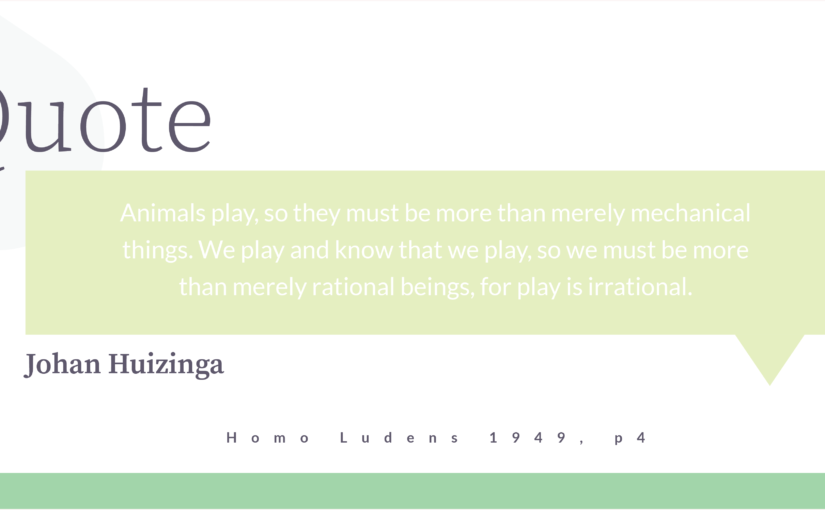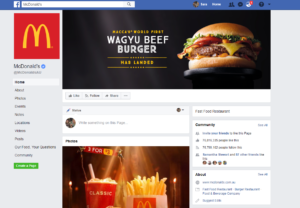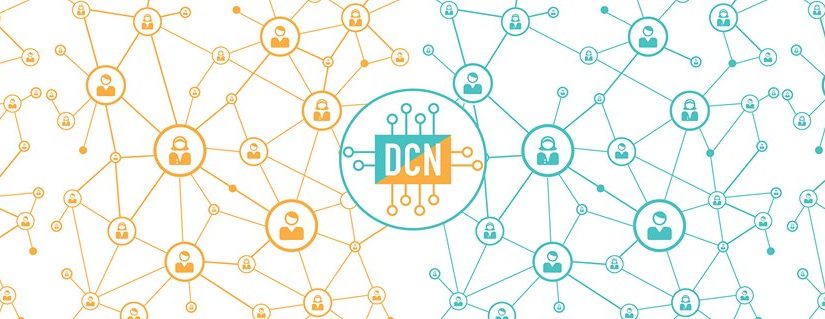Abstract
This paper explores the privacy and censorship issues among web communities in China. This paper looks at the different social media platforms banned in China such as Facebook, Twitter and Google and their Chinese controlled replacements including WeChat and Weibo. This paper will introduce the reasons for the Chinese government to invade the privacy of its people and understand explore whether such restrictions will continue to be accepted by its citizens or whether such strategies would backfire on the very essence that the concept was developed around.
Keywords: privacy, China, surveillance, censorship, freedom
The emergence of new smart and intelligence technologies has changed the dynamics of global commercial competitiveness and also provided enterprises with real-time outcomes. On the other end of the pendulum, the use of the internet for social communication has experienced a trending away from traditional internet censorship towards a next generation of censorship and surveillance undertaken by Governmental regimes. This is due to social media being perceived as portraying political insensitiveness and the extreme censorship and surveillance by government authorities have chipped significantly away at the fragility of human freedom for a voice to the right of speech. Perhaps, this paper would examine the democratic viewpoint of whether media scrutiny is of social benefit or a fallacy for political demarcation.
The Cost of the Internet
Previously, it was a laborious effort to plod through countless physical files and books. Today, our access to any type of data is instantaneous because of technological advances, involving computers and the Internet.
However, trying to maintain privacy on the Internet has become increasingly challenging because an individual may be tracked online by creating digital footprints whenever we use our emails, web browsers, search engines and social media sites. How can our details be protected so that our lives are not manipulated for the entertainment or benefit of others? Recently, Cambridge Analytica used personal information taken without authorisation from Facebook’s profiles of US voters and harvested the data towards a political outcome.
To what lengths have we handed over our privacy?
In the event that existing database is hacked or on sold, the privacy of the Internet user is lost. Although there are many ways to minimise intrusion into our electronic space, once we have dipped our toe into the Internet pond, can our privacy be truly guaranteed?
Contrary to what the public believes, not all those concerned with security and privacy are hackers or terrorists. Some governments have taken the surveillance of Internet usage to an extreme and China is racing towards a pervasive system of algorithmic surveillance. (Mitchell & Diamond, 2018). The Chinese government tracks and monitors their citizens online with a surveillance system called Golden Shield, allowing easy access to local, national, and regional records on each citizen. (Mitchell & Diamond, 2018) So far, this ambitious project is confined to a content-filtering Great Firewall. Examples of foreign internet sites which have been caught up in this Firewall and prohibited from the Chinese cyberspace are Google, Facebook, and The New York Times. For example, Facebook was blocked in China following the 2009 Ürümqi riots because Xinjiang independence activists were using Facebook as part of their communications network. According to the Renmin Ribao, the official newspaper of the Chinese Communist Party, 80% of its citizens agreed that China should punish Facebook (July 10, 2009). Some Chinese users also believed that Facebook would not have been able to progress successfully following these issues because the Chinese alternative Renren has many features similar to Facebook and complies with government regulations regarding content filtering. Although users were able to access Facebook in limited areas such as hotels favoring the patronage of foreigners, however, Facebook is still blocked according to Mazur (2017).
In addition, the communist party-state is also developing a scoring system on its citizens as a form of control on its own society. For example, depending on whether a person’s use of the Internet is deemed to be positive or negative (which refers to anything discriminatory against the Chinese government in any form), these activities transpose cumulatively onto the scoring system. The ability to obtain a financial loan or visa for overseas visits is dependent on where on the scoring system a person sits. This means that China is placing obstacles in the path of civil liberties on the pretext of undertaking surveillance to monitor crime and terrorism.
With a population of 1.4 billion (Worldmeters, 2018) and growing, it is known as the country with the highest number of mobile users worldwide (Pochtler, 2018). For example, in January 2018, there were about 1.4 billion subscribed and registered mobile phone users and China has set very strict guidelines on how the Internet is used in China. The level of strictness it administers over what the citizens posts is to ensure that no comments are placed online to cause the government to “lose face”.
The current statistic reflects its netizens’ unquenchable appetite for capitalism and contrasts China’s foray into the Internet landscape. In September 1987, Professor Qian Tianbai sent China’s first E-mail titled “Crossing the Great Wall to Join the World” which marked the beginning of the Internet in China. The Chinese government foresaw the potential and by the first quarter of 1990, a pilot network of education and scientific research (NCFC) for the Zhongguancun area was initiated using World Bank loans to build a high-speed interconnected network and a super-computing centre. In that same year, China officially registered its top domain name as CN. (Evolution of Internet in China, 2001)
In the beginning, the Chinese government undertook efforts to facilitate the use of the Internet by slashing fees charged to the dedicated circuit users by half. This resulted in a proliferation of users by 30 June 1999: 1.47 million PCs connected to Internet with 4 million Internet users and 29,045 registered domain names of CN with a total of 9,906 WWW web sites. (Evolution of Internet in China, 2001)
Since then, the government has been tracking existing user profiles and if one is found to have been associated with any comments deemed illegal or anything that will affect either China’s or its leader’s reputation, that particular outlet would be shutdown. The issue of censorship in China was further exacerbated when President Xi was offended by the citizens, in a meme likening him to Winnie the Pooh (Hernandez, 2018). The reason why the protesters created this meme was because they were unhappy with the presidential term limits and thought this protest would bring about changes. (Brimelow 2018) However, the cartoon was immediately censored as Chinese government is very particular that citizens should respect their leaders.
To further tighten up its already stringent regulations, “the government is starting to put together a real name registration and setting up a social credit system to tie one’s online activity to one’s physical identity. This makes it much more difficult to participate in that [meme] culture.” (McLauchlin, 2017) In addition, the English letter ‘N’ was briefly censored as it was used to also highlight unwanted attention to the President’s political tenure. This meant that social scientists were prevented from expressing dissent mathematically by using N > 2, with ‘N’ being the number of Mr. Xi’s terms in office (Hernandez, 2018)
The various social media platforms including Facebook, Youtube, Instagram and Twitter were banned in China because the companies refused to comply with the government’s policy of editing articles prior to being posted online (Beam, 2013) According to blogger Michael Anti, it was forseeable that Twitter would not last long because “Twitter is a tool which can put all the sensitive things and sensitive guys together, very quickly. That’s the very thing that the Chinese government doesn’t want to see in China,” (Branigan 2009) Banning such sites reiterated the governing party’s control over its people. (LaFraniere & Barboza, 2011) However, similar platforms such as Sina Weibo (Weibo) and Wechat, emerged in China to fill the void.
Weibo is the largest Chinese web application. (Yu & Asur & Huberman, 2011) It is also known as a space for freedom of speech and a platform for the community to access important news, however, not without the fear of retribution from the governing bodies. (Monggilo, 2016, p.169) Although a clone of Twitter, Weibo was created with microblogging services on the application, with the ability to monitor the keywords that are trending and other new words viewed as having the ‘potential to offend’ list. (Yu & Asur & Huberman, 2011) However, when Weibo failed to censor the content prior to posting online, it was suspended for a week. (Sun, 2018)
Widely used by 902 million daily users and about 38 billion daily messages sent on the platform, WeChat is poised to become China’s electronic ID system” (Liao, 2018). Lien & Che (2014) agrees that WeChat has become an important social media platform in China since the blocking of other social media platforms. However, the government is also able to monitor and track what the Wechat users are doing and all the information posted online are shared with the government. (Tech, 2017) The Chinese government has also created microblog operators to monitor social media accounts, delete all the false information online and to duplicate a copy of what the users have posted for six months. (The Associated Page, 2018) The limitation of freedom of speech in China is an issue that affects the everyday lives of the Chinese people, due to their opinions and ideas being regulated and monitored by the government. (Asamoah, 2016)
WeChat has many features that can help the government to track any data that they require such as “heat map”. This is a feature that had been installed with locationtracking abilities to find out about protests or areas that need a higher security to control order. (McLauchlin, 2017) Perhaps, this is a strategy by the Chinese government to prevent the same level of international scrutiny that took place after the 1976 Tiananmen Square incident. Besides, WeChat also plays a role in shaping public opinion. Five cent army, which is also known as wu mao, refers to a group of Chinese citizens that are paid by the government to post online statements in order to create interest in the Communist Party. This activity is predominantly undertaken by “public opinion analysts” who rely on tools such as big data analysis and cloud computing to undertake their surveillance. (McLauchlin, 2017)
Although it is widely recognised within China that WeChat is a platform that is massively monitored, its owner (Tencent) has attempted to convince users to “rest assured as respecting user privacy has always been one of WeChat’s most important principles.” (Liao, 2018) In flexing its political muscles on its own people, the Chinese government has effectively clamped down on the country’s freedom of speech, a freedom that is taken for granted in Western cultures. However, the message that China wishes to convey is “as long as you’re not doing anything weird and plotting against the government, they’re not going to dig through your data” (Liao, 2018)
China has not only tightened censorship of the Internet and media and passed a new law regulating foreign nongovernmental organizations but has also launched ideological campaigns in universities and think tanks. Perhaps, the most intimidating strategy employed to date is the arrest of rights lawyers, feminists, foreign NGO workers, bloggers, environmental activists and others who are viewed not to tow the political line. (Segal, 2016, p.5)
Who benefits?
Companies and consumers in China have traditionally not had any expectations for individual privacy. It was also a given that this kind of privacy did not always leave to negativities because of the perceived benefits including the prevention of terrorism and the guarantee of a safe and peaceful existence. Compared to snooping accepted at home where typical multi-generational households were overcrowded, the government’s poking around in one’s business didn’t feel like an extreme intrusion. (Minter, 2017)
Companies such as Alibaba and Tencent Holdings have been taking advantage of this casual attitude, granting themselves complete freedom to disclose user behavioral profiles to third-party vendors and users have recourse in the event the data has been misused. (Zuo 2017)
In a 2015 survey by a Chinese internet security organization, 44% of Chinese websites had security vulnerabilities resulting in data leakages. There has also been a sharp increase in theft of personal information, with losses estimated at $13.2 billion. (Yu, 2014) Cyber-thieves have little to fear from the law and many third-party brokers ply their trade in the open because law enforcement agencies often do not pay any credence to related reports. However, China can no longer afford that kind of complacency because the Chinese are growing more demanding for changes and international companies have begun to lose trust to invest in China.
Internet and Privacy in the Western World
The beginnings of the Internet in Australia followed a path similar to China and were once the property of an exclusive community steeped in academia. (Zobel, 2014) Existing restrictions meant that the Internet protocols were only adopted after attaining a level of maturity and technology progressing rapidly from 1989 onwards, witnessed by the proliferation of small devices with wireless access to the Internet (Clarke, 1994)
However, tensions between liberty and authoritarianism have resulted in ongoing efforts by the government to overcome the anonymity offered to Internet users and enable increased governmental control. Methods such as ‘tunnelling’ techniques to close down portion of the transmission capacity required for ‘virtual private networks’ and using people to use authority issued identities which can be authenticated are some examples to facilitate surveillance. (Clarke, 1999)
In the UK, the ISPs are required to store user internet history for a certain period enabling messages months ago to be easily retrieved. Details on calls, texts and website history can be used in the event of a police investigation. (Forrest 2016). Australia has legislated similar strategies in overcoming terrorism. Therefore, is the control exerted by these governments different from China and will it be a matter of time before views of governments globally will be in agreement that total social control is the only solution forward?
Conclusion
The world today is accustomed to placing a positive reliance on interconnected networks, with the added freedom of social media expression. However, severe curtailment of this freedom in China has eroded the cornerstone of the rule of law for its people.
While China’s actions may be viewed as rather extreme, it could also be said that the Chinese people have displayed a lack of understanding of cohesiveness enjoyed by other countries regarding social media. While strict enforcement of censorship to social media outlets has positively ensured the lack untoward social behavior in China, the downside to this fallacy is that its citizens are often left in the dark about any inappropriate conduct or wrongdoings by their own government.
The fundamental truth is that the global internet is ideally a knowledge gathering resource to empower individuals but it is also a tool for control through censorship and surveillance by politically sensitive governments where the norm is “By the stroke of a pen by the legislative draftsman, the civil liberties of an individual may be snatched away without a minute’s notice”.
References
Asamoah, N. (2016). Freedom of Speech : China and the Case of Ai WeiWei. Honors Council of the Illinois Region Papers. Paper 3. Retrieved from http://dc.cod.edu/hcir2016/3
18642283_ConferencePaperFinal 1
The Associated Page. (2018). China orders microblog operators to tighten censorship. Retrieved from https://phys.org/news/2018-02-china-microblog-tighten-censorship.html
Beam, C. (2013). Chinese Embassies Love Facebook- Even Though Chinese Citizens Are Banned From It. Retrieved from https://www.techrepublic.com/article/privacy-issues-abound-as-uk-passes-controversial-snoopers-charter/
Branigan, T. (2009). China blocks Twitter, Flickr and Hotmail ahead of Tiananmen anniversary. Retrieved from https://www.theguardian.com/technology/2009/jun/02/twitter-china
Brimelow, B. (2018). Winnie the Pooh memes are getting banned on social media after China announces Xi Jinping may stay in power for life. Retrieved from https://www.businessinsider.com.au/winnie-the-pooh-memes-china-censored-xi-jinping-2018-2?r=US&IR=T
Choy, P. (2013). Facebook and Twitter in China! Retrieved from https://web.archive.org/web/20131212145054/http://www.headlineasia.com/facebook-and-twitter-in-china/
Clarke, R. (1994). Asimov’s Laws of Robotics: Implications Information Technology Part 2. Computing Miluex, 27(1), p. 57-66. DOI: 10.1109/2.248881
Clarke, R. (1999). Internet privacy concerns confirm the case for intervention. Communications of the ACM, 42(2), p. 60-67. doi: 10.1145/293411.293475
Evolution of Internet in China. (2001). Retrieved from http://www.edu.cn/introduction_1378/20060323/t20060323_4285.shtml
Forrest, C. (2016). Privacy issues abound as UK passes controversial ‘snoopers’ charter’. Retrieved from https://www.techrepublic.com/article/privacy-issues-abound-as-uk-passes-controversial-snoopers-charter/
Hernandez, J.C. (2018). China’s Censors Ban Winnie the Pooh and the Letter ’N’ After Xi’s Power Grab. Retrieved from https://www.nytimes.com/2018/02/28/world/asia/china-censorship-xi-jinping.html
Jacobs, A. & Helft, M. (2010). Google, Citing Attack, Threatens to Exit China. Retrieved from https://www.nytimes.com/2010/01/13/world/asia/13beijing.html
LaFraniere, S. & Barboza, D. (2011). China Tightens Censorship of Electronic Communications. Retrieved from https://www.nytimes.com/2011/03/22/world/asia/22china.html
Liao, S. (2018). How WeChat came to rule China. Retrieved from https://www.theverge.com/2018/2/1/16721230/wechat-china-app-mini-programs-messaging-electronic-id-system
Lien, C. H. & Cao, Y. (2014). Examine WeChat users’ motivations, trust, attitudes, and positive word-of-mouth: Evidence from China. Journal of Computers in Human Behaviour, 41, p. 104-111. http://dx.doi.org/10.1016/j.chb.2014.08.013
McLauchlin, H. (2017). We(Chat) The People: Technology and Social Control in China. Retrieved from http://harvardpolitics.com/world/wechat-the-people-technology-and-social-control-in-china/
Minter, A. (2017). Chinese learning the value of privacy. Retrieved from https://www.japantimes.co.jp/opinion/2017/03/25/commentary/world-commentary/chinese-learning-value-privacy/#.Wu-BXNOFPR0
Mitchell, A. & Diamond, L. (2018). China’s Surveillance State Should Scare Everyone. Retrieved from https://www.theatlantic.com/international/archive/2018/02/china-surveillance/552203/
Monggilo, Z.M (2016). Internet Freedom in Asia: Case of Internet Censorship in China. Journal of Government Politics, 7(1) p. 153-179. http://dx.doi.org/10.18196/jgp.2016.0026
Mozur, P. (2017). Blocked in China, Facebook is said to seek a Shanghai Office. Retrieved from https://www.nytimes.com/2017/09/06/technology/facebook-china-shanghai-office.html
Park, P. (2018). China’s Weibo social media suspends portals after reprimand. Retrieved from https://www.cnbc.com/2018/01/27/chinas-weibo-social-media-site-suspends-portals-after-reprimand.html
Pochtler, A.M. (2018). Number of mobile cell phone subscriptions in China from January 2017 to January 2018. Retrieved from https://www.statista.com/statistics/278204/china-mobile-users-by-month/
Rutherford, M. L. (2017). What Personal Information Does Meitu Take? Here’s What The Free App Collects From Your Profile. Retrieved from https://www.bustle.com/p/what-personal-information-does-meitu-take-heres-what-the-free-app-collects-from-your-profile-32314
Segal, A. (2016). China, Encryption Policy, and International Influence. Hoover Institution. Stanford University.
Sun, L. (2018). Weibo’s Growth Could be Derailed by Chinese Regulators. Retrieved from https://www.fool.com/investing/2018/02/02/weibos-growth-could-be- derailed-by-chinese-regulat.aspx
Tech. (2017). Social media and censorship in China: how is it different to the West. Retrieved from http://www.bbc.co.uk/newsbeat/article/41398423/social-media-and-censorship-in-china-how-is-it-different-to-the-west
Waddell, K. (2016). Why Google Quit China and Why It’s Heading Back. Retrieved from https://www.theatlantic.com/technology/archive/2016/01/why-google-quit-china- and-why-its-heading-back/424482/
Worldometers. (2018). China Population (Live). Retrieved from http://www.worldometers.info/world-population/china-population/
Yu, L., Asur, S. & Huberman, B. (2011). What Trends in Chinese Social Media.Computer Science, Computers and Society. Cornell University Library.
Yu, E. (2014). Alipay sorry for customer data leak. Retrieved fromhttps://www.zdnet.com/article/alipay-sorry-for-customer-data-leak/
Zobel, J. (2014). How Australia connected to the internet 25 years ago. Retrieved from https://theconversation.com/Conference paper-australia-connected-to-the-internet-25-years-ago-28106
Zuo, M. (2017). Who’s buying, selling and stealing your personal data in China?Retrieved from http://www.scmp.com/news/china/society/article/2097629/whos-buying-and-selling-your-stolen-data-china













